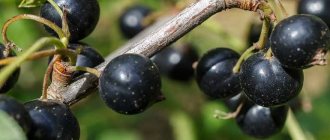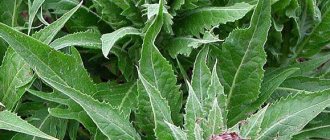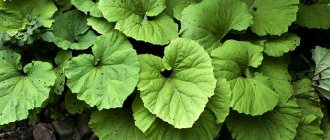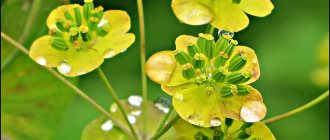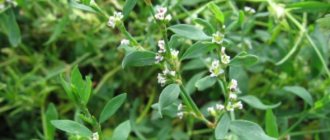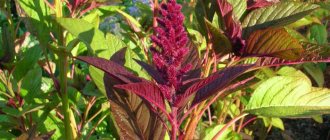Chemical composition
Photos of Echinops and its medicinal properties are of interest due to the rich composition of the plant. The leaves, seeds and roots contain:
- flavonoids;
- steroids and coumarins;
- ascorbic acid;
- routine;
- tannins;
- saponins;
- triterpenoids;
- fixed oils;
- higher aliphatic carbohydrates.
The alkaloid echinopsin present in the seeds is of particular value. It has a pronounced medicinal effect, which is why mordovnik grains are most often used to prepare water and alcohol preparations.
What helps and medicinal properties of Echinops
The medicinal Echinops has a beneficial effect on the body. In particular, the plant:
- helps with stress and psychosis and strengthens the nervous system;
- accelerates the healing of wounds and cuts when applied topically;
- strengthens the walls of blood vessels and increases their elasticity;
- improves blood circulation and equalizes blood pressure;
- restores vitality and good mood;
- helps improve the condition of paralysis and paresis;
- removes toxins, waste and traces of heavy metals from the body;
- improves the condition of the muscular system and bone tissue;
- stops bleeding;
- improves liver function and promotes its recovery;
- protects against the development of cancer;
- stimulates digestion and increases appetite.
Due to its diuretic effect, Echinops helps get rid of edema. It can be used to remove fine sand from the kidneys.
The properties of Echinops are used in the treatment of polio in children.
Medicinal properties of Echinops globulus
Tonics that improve the condition of the nervous system are prepared on the basis of the seeds, roots and leaves of the ball-headed mordovnik. The plant is used for hypotension to increase blood pressure. The properties of the perennial are beneficial in the treatment of paralysis, joint ailments and muscle atrophy.
Medicinal properties of Echinacea vulgare
Common Echinops is used in the treatment of neurological diseases. It can be used for frequent migraines, absent-mindedness, low immunity and chronic fatigue. Plant-based products help improve the condition of radiation sickness.
Medicinal properties of Echinops for multiple sclerosis
Healing Echinops is often used in the treatment of multiple sclerosis. The alkaloid echinopsin in the plant slows down the development of the disease and prevents complications. Although natural herbal remedies do not completely eliminate the disease, the quality of life of patients improves.
Important! Treatment with a useful plant must be agreed with your doctor. Preparations based on echinops are not used for hypertension, asthma and some other diseases.
How is it grown?
Growing Echinops does not seem difficult. The plant itself is quite unpretentious and easy to care for. It can grow on any soil, but still has its own favorite soil composition. It grows well on land fertilized with black soil, or containing clay and fertilized with organic fertilizers. Fields after harvesting corn or potatoes are perfect for these purposes.
Fairy tale pear: description, growing secrets, proper care
An important quality of Echinops is its good tolerance to drought. It is able to grow and bloom even with irregular and poor watering. However, it is not worth using this quality constantly and it is better to provide average but constant watering. Prefers direct rays of light.
The plant can be planted with both seeds and fruits. Seeds are sown in autumn, under the cover of phacelia. Phacelia is an annual plant that, when growing, forms a delicate green carpet that easily decomposes and provides the earth with nitrogen. The seeds are not placed densely, with an interval of 20 cm. You can sow the seeds either by hand or using a special sowing device. At this time, the plant will be able to produce strong sprouts and help get rid of weeds.
Important! The fruits are planted at the end of summer or in mid-autumn. They are spread over the ground and then covered.
For better growth, it is necessary to fertilize the sprouts with ammonium nitrate in early spring to provide additional nitrogen.
The globular mordovnik can be easily confused with its close relatives – tall and Russian. Their honey-productive function is many times worse. Therefore, for novice beekeepers, it is better to first consult before planting.
Methods of preparation and use
Alcohol and aqueous preparations are made from the medicinal Echinops. In both cases, the plant imparts beneficial properties well to the liquid base.
We recommend reading: Common cuff: use in medicine, photos and reviews
Mordovnik tincture
Traditional medicine mainly uses mordovnik in the form of a medicinal tincture. In strong alcohol, the valuable substances in the plant are best distributed. The drug is prepared as follows:
- Unpeeled plant seeds are poured halfway into a small glass jar;
- fill the raw material with vodka up to the neck;
- when closed, put away for 40-60 days in a dark, warm place;
- After the expiration date, filter.
You need to take the tincture three times a day on an empty stomach, 10-30 drops. For convenience, the product is pre-diluted in a spoonful of water.
You can use Echinops tincture without interruption for up to a month.
Decoction
A decoction of the plant has good medicinal properties. It is prepared like this:
- 5 g of dry seeds are poured into 300 ml of water;
- heat to a boil and simmer for another 15 minutes over low heat;
- cool and filter.
The product has a good effect on circulatory disorders, reproductive problems in men and poor digestion. It is usually taken 50 ml three times a day.
Mordovnik decoction can be used to treat inflammation of the skin
Description of Echinops
If you look at the photo of the Echinoid, you can immediately understand why it was known under one of the names, as the Echinoid. The first information about this plant was recorded by doctors of Ancient Greece, who described it as a medicinal plant, the flower of which had the shape of a mace of a purple or bluish hue.
But why was he compared specifically to hedgehogs and mace?
Most often, in photographs of Echinops globulus, the emphasis is placed on the flower, which has a spherical shape, very similar to a battle mace.
But looking at a photograph, the plant may seem much smaller to you than it actually is. This is because the flowers are located on its upper part, but the main body of the plant can reach 2 m in height, which is really a lot for this species.
Read here! Black cohosh - description of the plant, recipes and use of the plant in folk medicine (145 photos and videos)
«>
In addition, despite its beneficial properties, Echinops is a weed, and a very prickly one at that. At the top of this structure there is an inflorescence, which at first can be mistaken for one full-fledged flower, but this is not so - small flowers grow from the center of this sphere, and they are quite thin, which is why they look like small needles.
The radius of the Echinops inflorescence can reach up to 8 cm, which is quite a lot. As a result of this size, one inflorescence can contain more than three hundred small flowers.
If you are thinking about where to buy Echinops, then this should not be a problem, because there are more than a hundred different species in the world, a huge number of which are found in Russia and the CIS countries.
The use of Echinops in folk medicine
The beneficial properties of Echinops help improve the condition of inflammatory ailments, diseases of muscles and joints, and weakened immunity. Traditional medicine offers many recipes using seeds and other parts of the plant.
For psoriasis
An alcohol tincture of medicinal echinops has a good effect on psoriasis. The recipe looks like this:
- pour 400 ml of vodka into a large spoon of seeds;
- seal the vessel and shake well;
- put it in a dark place for two weeks.
The finished strained product is used to wipe the inflamed areas. During therapy, the skin should also be treated with emollients, since alcohol tincture greatly dries out the epidermis.
For dystrophy
Echinops tincture strengthens the body with a lack of muscle mass and helps maintain the balance of vitamins. For medicinal purposes the following drug is taken:
- 5 g of plant seeds are poured into 1 liter of high-quality vodka;
- put in a dark place for two weeks;
- Remove and shake from time to time.
The finished tincture is taken 15 drops on an empty stomach twice a day, morning and evening.
For impotence
An aqueous decoction of Echinops has a beneficial effect on the genitourinary system and helps with weakened potency in men. Prepare the product as follows:
- pour 5 g of plant seeds into 300 ml of water;
- heat and boil after boiling for 15 minutes;
- cool until warm and filter.
You need to take the decoction three times a day, 30 ml.
For inflammation of the trigeminal nerve
The analgesic properties of Echinops tincture help with inflammation of the trigeminal nerve. The remedy is prepared from the flowers of the plant, and traditional medicine recommends the following recipe:
- 100 g of dry raw materials are poured with 1 liter of alcohol 70%;
- put the closed vessel in a dark place for a month;
- At the end of the period, the finished preparation is filtered.
The tincture should be taken on an empty stomach three times a day, a single dosage is 20 drops per 50 ml of water.
Alcohol tincture of Echinops is taken for up to a month, after which a break is taken for two weeks.
For otitis media
For chronic otitis media and hearing impairment, the following remedy is prepared for treatment:
- 100 g of Echinops seeds are poured into 500 ml of unrefined vegetable oil;
- put in a water bath for two hours and warm up, not allowing it to boil;
- remove from the stove and cool the product.
In the morning, you need to soak cotton swabs in medicated oil and insert them into the ear canals for 20-30 minutes. It is also useful to instill 3 drops of the product into each ear twice a day.
For paralysis
The benefits of Echinops can be used in the complex treatment of paralysis. The plant improves blood flow and the functioning of the nervous system, and also maintains the health of muscle tissue.
For therapeutic purposes, traditional medicine suggests making the following decoction:
- 10 g of Echinops seeds are combined with 20 g of heather, lemon balm and rose hips;
- add 40 g of oregano and hawthorn fruit;
- measure out two large spoons of the mixture and pour a glass of boiling water;
- Boil over low heat for ten minutes.
The finished product is infused under the lid for about an hour and filtered, and then topped up to 250 ml with clean water. You need to drink 50 ml of the decoction three times a day before meals, the treatment is continued for two months, and then a week break is taken.
For hypotension
Echinops tincture increases blood pressure and is used in the treatment of chronic hypotension. The healing remedy is done like this:
- 50 g of echinops roots are thoroughly crushed;
- pour 100 ml of alcohol or vodka into the raw material;
- put away for two weeks in a dark place.
The strained tincture should be taken on an empty stomach, 15 drops three times a day. Continue treatment until you feel better.
For multiple sclerosis
The healing properties of Echinops are widely used in the treatment of multiple sclerosis. Traditional medicine advises preparing the following drug:
- a large spoonful of seeds is poured into 500 ml of vodka in a glass vessel;
- for 15 days, put the container in a dark place, not forgetting to shake it daily;
- filter and pour into a clean vessel.
It is necessary to take the tincture according to the “slide” scheme. On the first day of using the drug, drink three drops of the drug before each meal, for a total daily dosage of nine drops. On the second day and further, the volumes are increased by one more drop.
We recommend reading: Bladderwort: uses, medicinal properties, benefits and harms
When the single amount of the medicine is 15 drops, you will need to drink the tincture in a constant dosage for 20 days. Then the volumes are gradually reduced using the same algorithm.
Attention! The use of Echinops tincture for multiple sclerosis must be agreed with a doctor.
For migraine
An infusion of medicinal Echinops helps with chronic headaches. Make the remedy according to the following scheme:
- crushed roots and seeds of the plant are mixed equally;
- measure out 10 g of the collection and pour 250 ml of boiling water into a thermos or saucepan;
- when closed, leave for two hours in a warm place;
- filter.
You need to take the product 30 ml three times a day.
You can use Echinops infusion to reduce fever during colds and eliminate swelling
For CNS disorders
A water infusion of Echinops has a good effect on the central nervous system and improves the condition of pain, inflammation and deterioration of motor functions. The remedy is prepared as follows:
- 15 g of plant seeds are poured into a thermos;
- pour 200 ml of fresh boiling water;
- cover with a lid and leave for 12 hours to infuse.
The strained drink is taken 50 ml three times a day; it is best to drink the product on an empty stomach.
Rules for growing from seeds
Mordovnik is grown from seeds; they are easiest to collect yourself. The collection is carried out in the second half of August and September. Mature seeds can be distinguished by the fact that after separation from the stem, their inflorescence crumbles into individual achenes.
If it was not possible to immediately collect the required quantity, then the mother plot is first planted, and then seeds are collected from it for mass sowing.
Did you know? You can, starting from the second year, mow the Echinops at the end of spring, then its flowering will begin later - somewhere in mid-August and will last throughout September, this is very helpful in building up bees before winter.
Sowing
Echinops globulus is a resistant plant; cultivation from seeds is usually carried out in the spring, when the soil surface warms up to 12°C, although it can be planted in the winter, then autumn and winter precipitation will cover the seeds and provide the necessary conditions for seedlings.
Seeds are sown in dug or plowed soil. For small areas, grooves or nests are made 15-25 cm apart, the seeds are sown mixed with sawdust and covered with earth.
For large areas, sow in two rows, 30-75 cm in arcs from each other, using a cultivator, and then roll. Because the seeds are covered with hairs and adhere to each other, sowing is easier by hand. When sowing, it is recommended to apply fertilizers such as superphosphate, 50 kg/ha.
Important! Instead of fertilizers, you can sow Echinops with phacelia in a ratio of 8:5; this annual plant enriches the soil with nitrogen, grows quickly and is also a honey plant.
Winter-hardy varieties of apple trees for the Urals and Siberia
The germination rate of this honey plant is high, so even simply scattering the seeds will bring results.
Sowing care
Like planting, caring for Echinops is simple. Soil moisture should be average, stagnation of water should be avoided. After the plants have fully sprouted, they are thinned out and replanted where necessary. Row spacing can be cultivated to a depth of about 7 cm and weeds can be weeded.
Contraindications to the use of Echinops
The medicinal properties and contraindications of the Echinops herb accompany each other. Some active substances in the plant can be harmful and cause serious poisoning. You cannot use herbal tinctures and decoctions:
- for hypertension;
- with a tendency to seizures;
- with hyperfunction of the thyroid gland;
- for hepatitis and nephritis;
- for bronchial asthma;
- during pregnancy and breastfeeding;
- for individual allergies;
- in childhood and adolescence.
It is necessary to use medicines based on Echinaceae strictly in the dosages specified in the recipes. If the volume is exceeded, side effects may develop - nausea, vomiting, dizziness and migraine, as well as muscle pain.
Attention! Poisoning with the medicinal echinops is a serious danger. At the first signs, you need to rinse your stomach, drink activated charcoal and immediately consult a doctor.
Collection and preparation
For treatment with Echinops, all parts of the plant are used, but they are collected at different times. Flowers and leaves are harvested in July and August on a warm and dry, but not hot day. The grains should be collected closer to the beginning of September - at the moment of ripening, but before the fruits open and release seeds. The roots of the plant are dug out of the ground in late autumn, after the Echinops has entered a dormant state, and washed thoroughly before processing.
It is recommended to wear gloves, safety glasses and a face covering when collecting any parts of the grass. Echinoid hairs and spines have an irritating effect on the skin and mucous membranes.
The prepared medicinal raw materials are laid out to dry in the open air or in a warm room. Direct rays of the sun should not fall on the plant. When ready for storage, the flowers and leaves darken and begin to crumble in the fingers, and the fruits disintegrate and allow the seeds to be sifted. To speed up the processing process, it is allowed to use dryers and ovens, but provided that the temperature does not exceed 50 °C.
Medicinal raw materials are placed in paper bags and fabric bags. Mordovnik should be stored away from bright light and at low humidity.
Echinops seeds and flowers retain useful substances for up to a year, roots - up to two years
Types and varieties of Echinops with photos
The genus Echinaceae includes 190 different species of wild and cultivated grass modifications. In Russia, only ten varieties are grown. Below are some of the most famous names of the flower.
Echinops sphaerocephalus
Quite a popular species of Echinops in our area. Straight, hairless stems begin to branch at the top. At the peak of flowering, the bushes are crowned with blue spherical inflorescences, 5-7 cm in diameter. The foliage is presented in dark colors. The leaves are divided into lobes and have thorns at the ends. The species blooms in June or July.
Echinops ritro
The height of the shoots barely reaches more than half a meter. The stems are rich green in color and the inside of the blades contains hard silvery hair. The foliage is arranged in regular order. The formation of blue inflorescences occurs in August. The stalk of a white ovary peeks out in the center of the head.
Echinops latifolius
The length of the stems of the named species is 30-35 cm. The silvery, strong shoots are protected by a long pile. The edges of the emerald leaves are sharp with prickly spines. The length of the leaves does not exceed 20 cm. The inflorescences are painted in a delicate purple hue. Flowering begins in May.
The magical properties of the sharogolny mordovnik
Popular beliefs endow the ball-headed mordovnik with mystical properties. In signs it can also be found under the name “chertogon”. It is believed that the plant scares away evil spirits, serves as a talisman and protects its owner from any evil.
In addition, the Mordovnik is able to bring harmony to family relationships. It promotes reconciliation between spouses and stops quarrels, helps to gain mutual understanding. In magical rituals, echinops is used to remove damage to paralysis or dementia, the plant is used to fumigate rooms and expel evil spirits.
